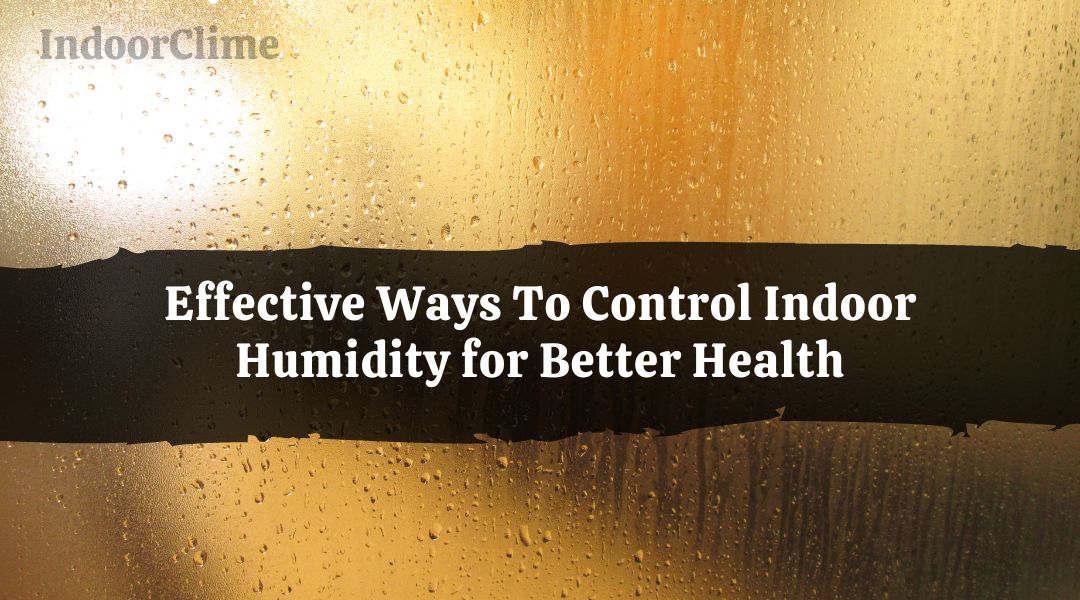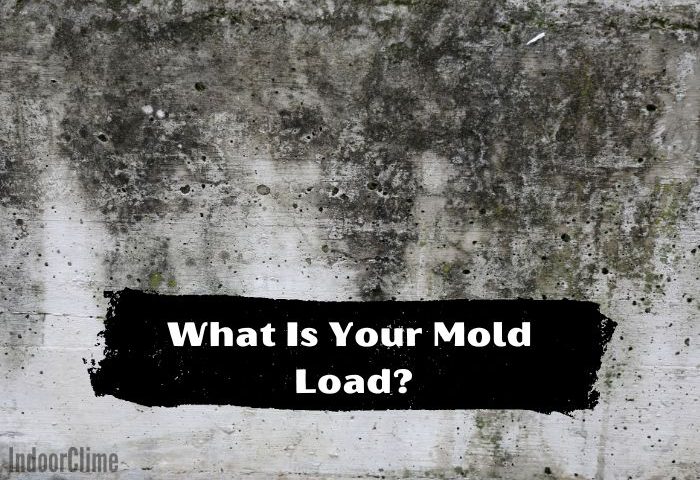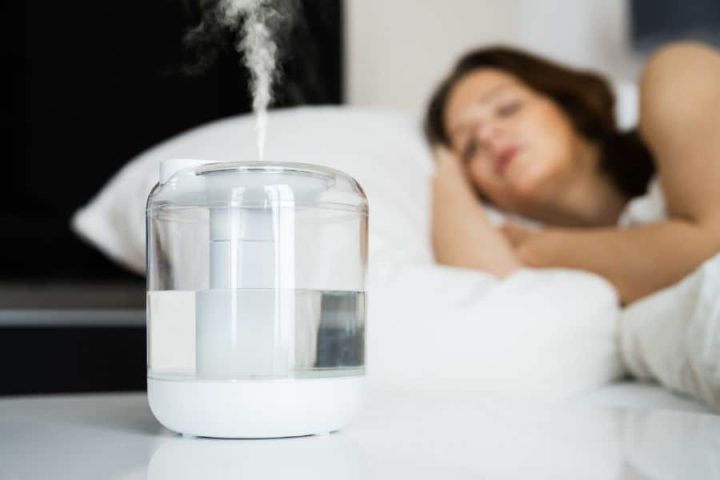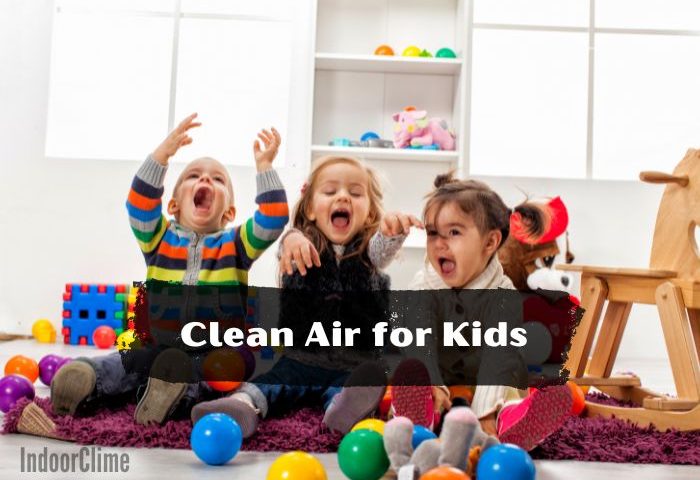As a health-conscious person, you are likely already aware of the importance of indoor air quality to your and your family’s comfort, health, and well-being.
For most people, indoor air quality primarily concerns the level of particulates and other matter in the home’s air. However, many overlook the importance of humidity and its impact on their health.
Indeed, whether you suffer from respiratory issues like asthma or not, controlling indoor humidity is a key factor in maintaining good indoor air quality and comfort and health in the home.
According to the CDC, one in 13 people in the U.S. has asthma. This equates to roughly 28 million sufferers of chronic respiratory conditions. It affects around 7.7 percent of adults and approximately 8.4 percent of children in the country.
Asthma is the leading chronic respiratory illness in children, with around 6 million kids under age 18 affected in 2015. For such individuals, maintaining good levels of indoor humidity is particularly crucial.
However, when indoor humidity levels are too high or too low, they can negatively impact even otherwise healthy people’s health.
Ideally, humidity in the home should be maintained at a level of between 35 to 50 percent. When it drops below 35 percent, as it is more likely to do during the drier fall and winter months, it can irritate the skin, eyes, throat, and nasal passages and cause chronic coughing.
When it rises above 50 percent, humidity can wreak even more havoc. High indoor humidity promotes an environment conducive to dust mites and mold spores, triggering allergic reactions.
It can also provide an optimal breeding ground for various infectious diseases and even cause serious health risks like heat stroke.
High Indoor Humidity: Why It’s a Problem

Suppose you’ve been outside on a day when the temperature and relative humidity are too. In that case, you already know how uncomfortable it is to be subjected to excessively humid air.
Unfortunately, just as relative humidity can rise outdoors, it can become excessive indoors, too.
According to a study by the American Society of Heating, Refrigeration and Air Conditioning Engineers, or ASHRAE, high indoor humidity fosters the development, growth, and spread of harmful biological agents like viruses, dust mites, fungi, and bacteria.
In turn, these biological agents may negatively impact the health of people in the home in several ways, including:
- infectious diseases, including the common cold and flu,
- allergic reactions like eye, nose, and throat irritation, wheezing and coughing,
- skin afflictions, including the exacerbation of eczema,
- other problems like headaches, fatigue, and body aches.
In addition to negatively impacting indoor air quality, high humidity levels can slow the drying of fabrics. This can cause mold and mildew, which may be dispersed more into the air, causing a cyclical effect that can worsen symptoms.
If you have babies, children, or significantly older adults in the home, it’s even more important to keep a close eye on indoor humidity levels and take steps to correct them if problems arise.
Such individuals have less mature or weakened immune systems and are more susceptible to high indoor humidity dangers.
Therefore, if humidity levels inside the home are too high, babies, children, and seniors may be more likely to develop problems like pneumonia, gastroenteritis, mumps, and asthma.
It has been estimated that 50 to 70 percent of asthma cases are triggered by allergic reactions, which are more likely to occur in places with high humidity.
Effects of High Indoor Humidity

In addition to fostering an environment conducive to allergens and infectious diseases, high indoor humidity can wreak havoc on the body’s ability to regulate its temperature.
That’s because the higher the humidity or percentage of vapor in the air, the higher the temperature.
On hot days, the heat index conveys humidity’s effects on how the human body perceives temperatures. It applies just as much indoors as outdoors.
When the body is subjected to high heat, sweating is one of the main ways to cool down. The water excreted through sweating should ideally evaporate, which helps to bring relief from high temps.
Unfortunately, the air is too saturated to absorb the evaporating sweat at high humidity levels. As a result, the body has to work harder to cool down, and the blood thickens and is harder to pump around the body, which can prompt issues like fainting, heat exhaustion, and even heat stroke.
Low Indoor Humidity Can Be Harmful Too

It stands to reason that if high indoor humidity is harmful, bringing it down will bring relief. That is true, but excessively low humidity causes problems, too. Since the human body is approximately 70 percent water, it needs proper moisture.
It continually loses moisture through sensible water loss or apparent water loss – like urination – and insensible water loss, which is less readily apparent and may include moisture loss through sweating and breathing.
The human body can lose up to two liters of water per day through such processes. When humidity is too low – indoors, it can get as low as 20 percent – the loss rate increases, causing health problems.
Some examples of how low indoor humidity can negatively impact health include:
Dry mucus membranes – When there is low humidity, the body works harder to bring more in. The mucus membranes that filter and moisten the air may become too dry. In turn, they are less capable of moisturizing the air, causing it to feel harsh.
Their ability to filter out impurities, including viruses and bacteria, is compromised. This is partly why cold and flu seasons occur during the drier fall and winter months.
Dry, cracked sinuses – Low indoor humidity can dry out the sinuses. They can then become cracked, and, in some cases, bleeding may occur. Nosebleeds happen more often during times of low humidity.
Dry skin is the largest organ in the body, and it can become overly dry when air humidity levels are too low. This can cause issues like itchiness, and cracks in the skin may even develop.
These can introduce even more pathogens into the body, increasing the odds of contracting diseases and suffering from allergic reactions.
Dry eyes – The eyes’ moisture may become imbalanced in response to overly dry air. This can cause them to become itchy, dry, or watery when tear ducts overcompensate.
How to Resolve Low or High Indoor Humidity

You can’t correct indoor humidity problems without accurately measuring humidity levels in the home. Tools that may be purchased to facilitate this include:
- Professionals typically use hygrometers – Specialized tools for measuring humidity levels only, these devices.
- Digital indoor hygrometer-thermometers – The cheapest and most common way to measure indoor humidity levels, these devices measure indoor temperatures and humidity levels. However, they must be checked often and directly, and it’s easy to forget to do so.
- Home weather stations measure various atmospheric conditions, including temperature, humidity, and pressure. Again, though, they must be checked regularly and directly, so it’s easy to overlook spikes or drops in indoor humidity levels even while using one.
- Smart hygrometers – Also known as smart home sensors, these devices may also measure various atmospheric conditions. Like other smart home devices, they may report changes to apps used on mobile devices like smartphones and tablets. You can stay abreast of indoor humidity levels through push notifications, which allows you to act more quickly upon them if they change drastically.
Once you get a sense of whether indoor humidity levels tend to be too low or too high, you can take steps to correct the problem.
Sometimes, plumbing or structural issues in the home may be the culprits; in such instances, professional repairs or renovations may be in order.
Symptoms of low humidity may be assuaged by staying hydrated and using lotions or moisturizers. In addition, improving the home’s ventilation may help address excessive indoor humidity, and keeping air conditioning units well-maintained may also be beneficial.
The best way to address low or high indoor humidity is through modern appliances specifically designed for such tasks. Since dry air can negatively impact health and exacerbate allergies, there is a massive demand for home humidifiers.
Whole-home or furnace humidifiers include direct water lines that provide a consistent water source.
AprilAire 500M Whole-House Humidifier
The air forced through the ventilation system is moistened through evaporation. If doorways are kept open, humidity levels across the home may increase.
More popularly, several types of portable humidifiers are available for increasing indoor humidity levels. Some use cool mist, while others use warm mist.
Warm-mist humidifiers are ideal for soothing sinuses and thinning mucus secretions and are famous for addressing allergic reactions and symptoms.
However, cool mist humidifiers are better suited for warm environments and larger areas.
AquaOasis™ Cool Mist Humidifier
The primary types of humidifiers are:
- Evaporative Humidifiers – This cool-mist humidifier draws air in, pushes it through a moistened wick submerged in water, and then ejects it as a cool mist evaporates into the air.
- Air Washer Humidifiers – These cool-mist humidifiers increase humidity levels while air purifying. They feature filter discs submerged in water and rotate to remove larger pathogens, including viruses and bacteria. They are believed to provide more direct allergy relief for those suffering from respiratory issues.
- Ultrasonic Humidifiers – Available in warm- and cool-mist varieties, ultrasonic humidifiers rapidly vibrate the water, causing it to turn into tiny particles. A fan then projects these particles as a fine mist that evaporates into the air.
- Steam Vapor Humidifiers – These devices heat water to a high temperature and release it as steam vapor. The heat can be high enough to destroy algae, mold, and bacteria, producing moister yet purer air.
If you discover that the humidity in your home is too high after measuring it with a device like an intelligent hygrometer, a dehumidifier may be in order.
Whole-house dehumidifiers are available, but they are pretty expensive. If your home has central air conditioning, you can likely use a portable dehumidifying appliance.
These devices have fans that move the air drawn in over refrigerated coils. These coils pull moisture from the air, which drips into and is collected by a tank. The air that is pushed back out is then much drier.
Whether you need a humidifier or a dehumidifier for your home, remember that such devices are designed to cover specific square footage.
In other words, some may be suitable for small rooms, while others may be capable of affecting humidity levels across much larger areas. Therefore, keep the total area that needs to be conditioned before shopping for a dehumidifier or humidifier for your house.
For Better Health, Measure and Control Indoor Humidity
As you can see, indoor humidity levels directly impact comfort, health, and well-being. Therefore, they play a crucial role in indoor air quality and should be monitored and adjusted.
Whether you or someone in your home has asthma, allergies, or other respiratory issues, humidity levels in the home can negatively impact the health of everyone who lives there.
It is well worth investing in a device for measuring humidity levels – and in a humidifier or dehumidifier, depending on what you discover.








